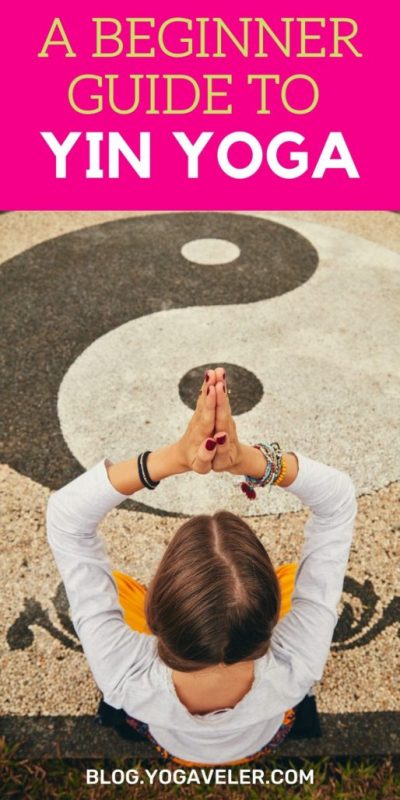What is Yin Yoga?
In this article, we discover Yin Yoga, a form of yoga that is accessible to all levels and morphologies.
A powerful fusion between Indian philosophy, and the ancestral knowledge from traditional Chinese medicine, with profound effects on your health and overall well-being.
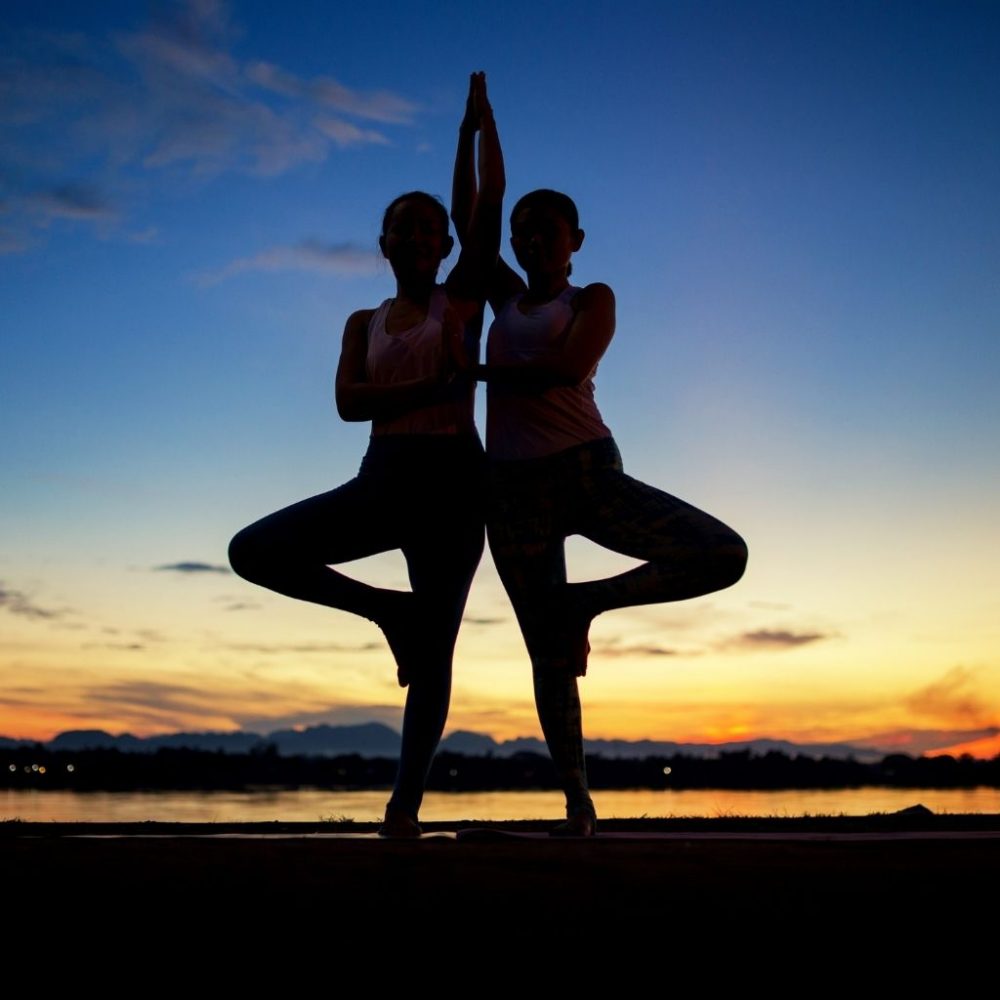
I have explored different techniques towards a better well-being such as:
- Acupuncture,
- Meditation
- or Reiki,
All take into account the fact that the human being, is not divided into several pieces that must be treated one by one, but rather as a holistic being where everything is interconnected, and where all experiences are recorded.
These energy practices allowed me to free myself from old burdens, blockages and memories, allowing me to feel light and free in my life.
That’s when I discovered another tool… Yin Yoga.
But, what is Yin Yoga?
Yin Yoga is a gentle and meditative practice through long, deep and passive postures. Some poses can be held for up to 20 minutes. The goal is to achieve a conscious connection between mind and body, in order to release tensions in the joints, spine, and mind. It is suitable for all levels, but requires mental strength and patience.
In this article, we are going to dive deeper on how yin yoga can balance our energy system, and what are the major benefits associated with this yoga practice.
Read on to discover how Yin Yoga can help you on your journey to wellness…
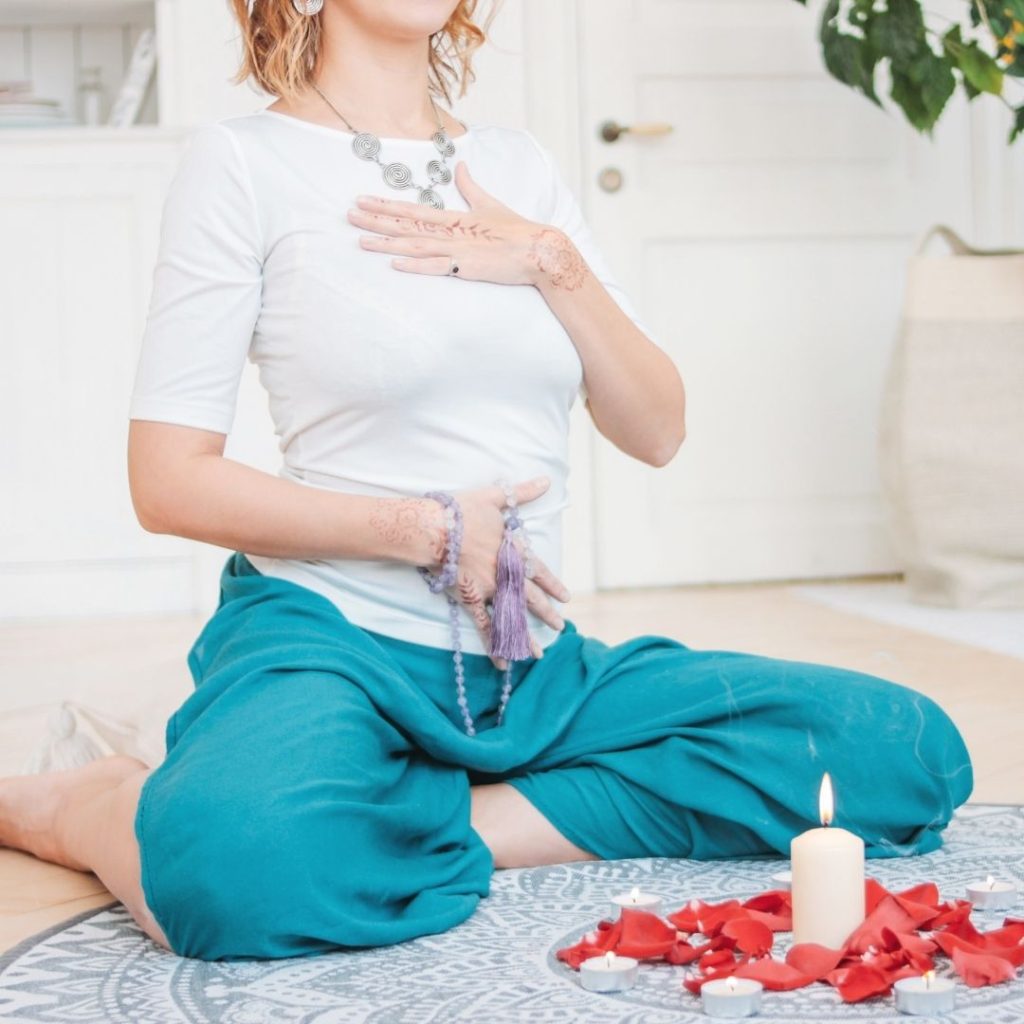
How does Yin Yoga rebalance our energy system?
Unlike most yoga styles, Yin doesn’t target muscle groups, but the deep and connective tissues such as fascias, ligaments, joints, and bones.
Yin Yoga is based on ancient Chinese and Taoist philosophies.
We work by passively stretching on the fascias and acting on the meridians (energy channels from traditional Chinese medicine).
The difficulty is to completely stop the contraction of the muscles. And to get the maximum range of movement of the joint. Without feeling pain, but rather, intensity of movement.
Korean researchers have been able to prove the existence of these meridians that pass through the fascias, our connective tissues that encompass all our organs, muscles and joints.
Meridians are energy flows that are linked to each organ. They pass through very specific paths, sometimes deep down, sometimes on the very surface of our skin.
Yin Yoga works on rebalancing the energy system by stretching and relaxing the muscles to reach the fascias.
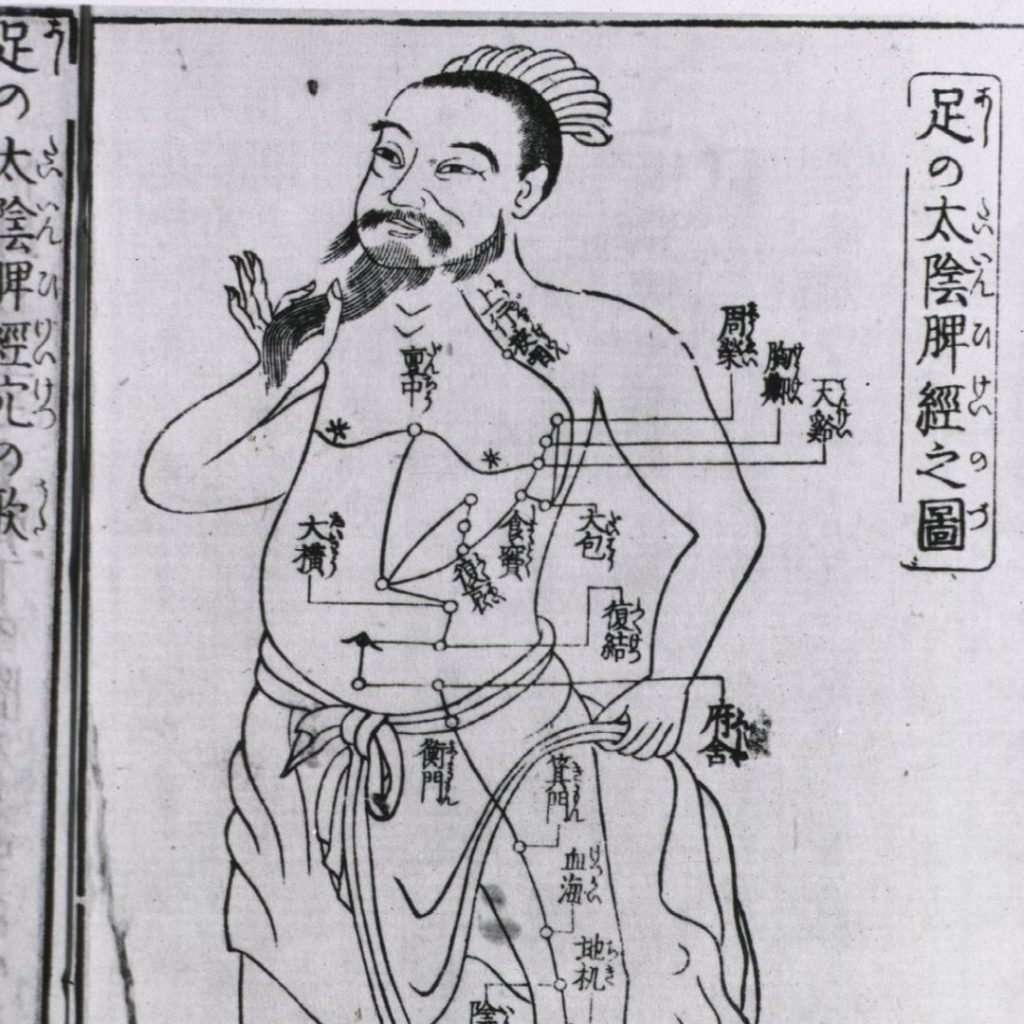
What are the fascias?
The fascias are irrigated but very dense tissues with little elasticity.
They form a single organ. From the feet to the head.
They could be compared to the white fibers of an orange. And in these fascias, energy circulates.
Hence the need to maintain their suppleness, stretching, not a muscle, but this magical organ.
What is extraordinary, is that all the postures act on the meridians of the body, where this energetic fluid circulates, which is dear and vital to us.
I like to compare them to the rivers of the world, where an everlasting fluid circulates and nourishes the earth.
If this energy circulates abundantly, and without a dam, then all is well.
But as soon as a blockage sets in, problems arise, and get worse with time, if nothing is done.
That’s why we hold the stretching postures for between two and five minutes or more.
It takes time for the fascias to relax, adapt and lengthen.
In this way we can improve our flexibility, the amplitude of our movements, and the mobility of our joints.
What is interesting is the fact that the fascias also store all our experiences.
The memories of accidents, physical injuries but also emotional shocks.
By working on the fascias, we manage to release memories and emotions, sometimes deeply buried.
But the benefits of Yin Yoga don’t stop there! Keep reading!
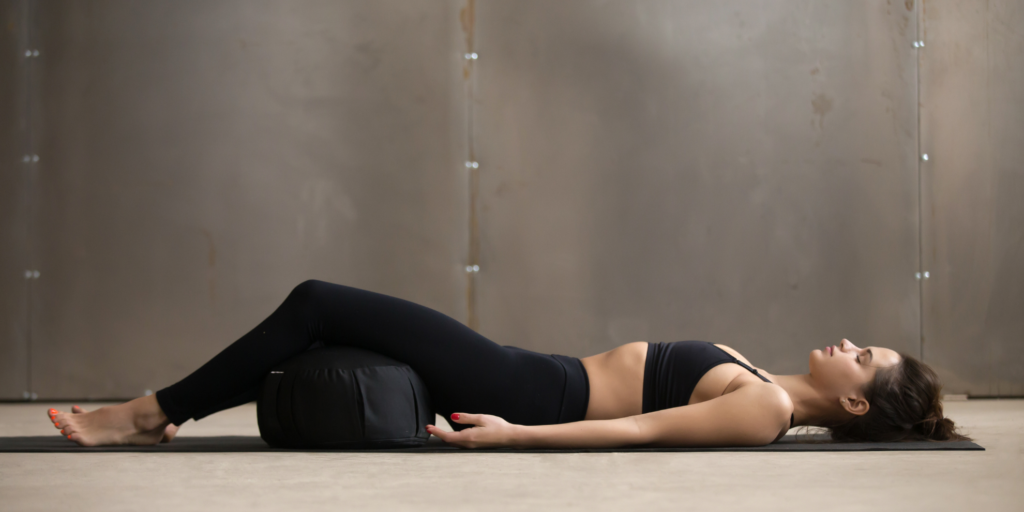
4 Benefits of Yin Yoga
In addition to working in-depth on rebalancing the energy systems of the body, the practice of yin yoga has other benefits related to physical and mental health.
You may also like 👉 Yin Yoga can help lose weight
1. Yin Yoga promotes introspection
Yin yoga has the particularity of being a calm and meditative practice that invites introspection, turning inward and listening to one’s sensations and emotions.
As the postures are held for several minutes, the mind has a tendency to get carried away and look for an exit, an occupation.
To calm this incessant flow of thoughts, we then try to concentrate on our breathing in order to bring benevolence and patience to these tense and agitated places.
Little by little, the body becomes more supple and loose. The mind begins to calm down, and begins to let go as well.
2. Yin Yoga improves flexibility
As far as my personal experience is concerned, after a few months of practice, I was able to notice a significant improvement on all parts of my body.
An increased flexibility, a greater mobility in my joints, and a better flexibility of my back.
These changes became noticeable when my routine movements became more fluid, more natural, and more free.

3. Yin Yoga reduces stress
But what is most impressive is the change in the mind.
Yin allows the mind to be free of stress, since the one and only thing we will have to do, is to be receptive to body sensations.
I realized that I embodied a calmer attitude towards the hazards of life and a certain serenity in my relationships with others.
One manages to maintain an inner harmony, a feeling of peace and fullness that goes beyond a purely physical sensation.
One feels connected to something greater, more transcendent.
Something outside of us that can guide us in the quietest moments towards a greater spirituality.
But that’s not all, Yin Yoga has another therapeutic aspect that is interesting to look at more closely…

4. Yin Yoga helps to release our emotions
Yin yoga helps you work in a targeted way, on the emotions that disturb you in your daily life, or that prevent you from moving forward.
Let’s take a look at the liver meridian.
In traditional Chinese medicine the liver is the seat of the soul.
It renews and supplies blood to all our other organs.
This is why a fluidm and balanced circulation of energy in the liver meridian is vital.
Weak Qi (weak energy flow) of the liver can result in problems with the eyes or tendons. But also by expressed or repressed anger.
When we feel angry or even annoyed, or when situations and people irritate us, and we go off on a tangent, it may be an indication that the liver meridian is out of balance.
The path of this meridian starts at the big toe.
It goes up next to the tibia on the inside of the leg, and on the inside of the thigh up to the groin.
It continues its path on the front of the bust up to the liver and gallbladder.
Then, it continues inside the body towards the skull.
When we want to stimulate or rebalance this meridian, we will choose postures that will either stretch the inside of the legs or the front of the bust with back bends for example…

The dragonfly posture
A perfect posture to start with the liver meridian is the dragonfly posture (also known as straddle pose), which in Hatha Yoga is called Upavistha Konasana.
One sits on the floor with both legs extended and spread as far apart as possible on the sides.
In Hatha Yoga you want to have your legs engaged.
That is to say that we engage the quadriceps, we raise the kneecaps, the feet are flexed and slightly turned outwards.
The abdominal muscles are engaged, the spine is straight, the shoulders are low, we try to bring the shoulder blades closer together, the head is in the extension of the spine, the skull pushes towards the ceiling.
The idea is to bend through the hips by contracting the abdominal belt and bringing the bust closer to the ground with a straight back.
In Yin Yoga the posture doesn’t look like that at all.
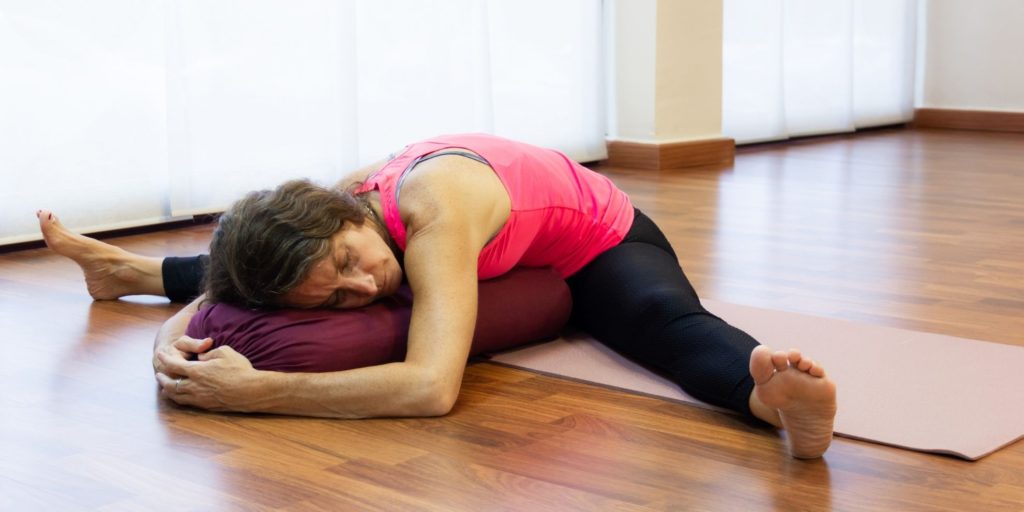
How to do the dragonfly pose in Yin Yoga?
First, for people who find it difficult to sit on the floor with their legs extended, we will arrange the posture by proposing to sit on a folded blanket or on a cushion.
We will support the knees or thighs with bolsters or bricks.
We try to relax the leg muscles as much as possible and of course we relax the feet.
As we also want to relax the muscles of the back of the body, the paravertebral, lumbar, neck muscles etc., we will propose to let the head, rest on a pile of bricks or on a bolster.
The back is round, the arms are relaxed on the ground, the head is left on its support.
We try to return gently into the posture so as not to cause contracture or injury.
After two or three minutes, the fascias adapt and one can let oneself go a little further in this forward flexion.
You’ll feel it pulling, it’s uncomfortable, it’s working.
And then we’re going to try to calm down that voice in our head that repeats to us: ooh it hurts, I can’t take it anymore, but how much longer do I have to stay in this posture, I’m never going to be able to get out of it….
At this point, you are invited to amplify your breathing, to bring kindness and understanding to those places that tend to resist.
Release a little more tension with each exhalation.
Your body is fine, it is your mind that does not like changes, discomfort, experiencing something it has never experienced before.
So, you breathe, and you listen to yourself, and you let go.
Listen to your body. Try to differentiate between discomfort and pain.
Discomfort can be overcome, pain has to be listened to.
When it’s time to get out of the posture, do it gently, the same way you got in. You will feel stiff, like glass, it’s normal and this feeling passes quickly.
Suddenly, you will feel the energy flowing back, circulating again in your body, with a feeling of calm and well-being…
This is how we manage to rebalance our entire energy, metabolic and nervous system by working on the different meridians of our body.
Experience it for yourself. You will be pleasantly surprised by the power of this practice. The path is within you.
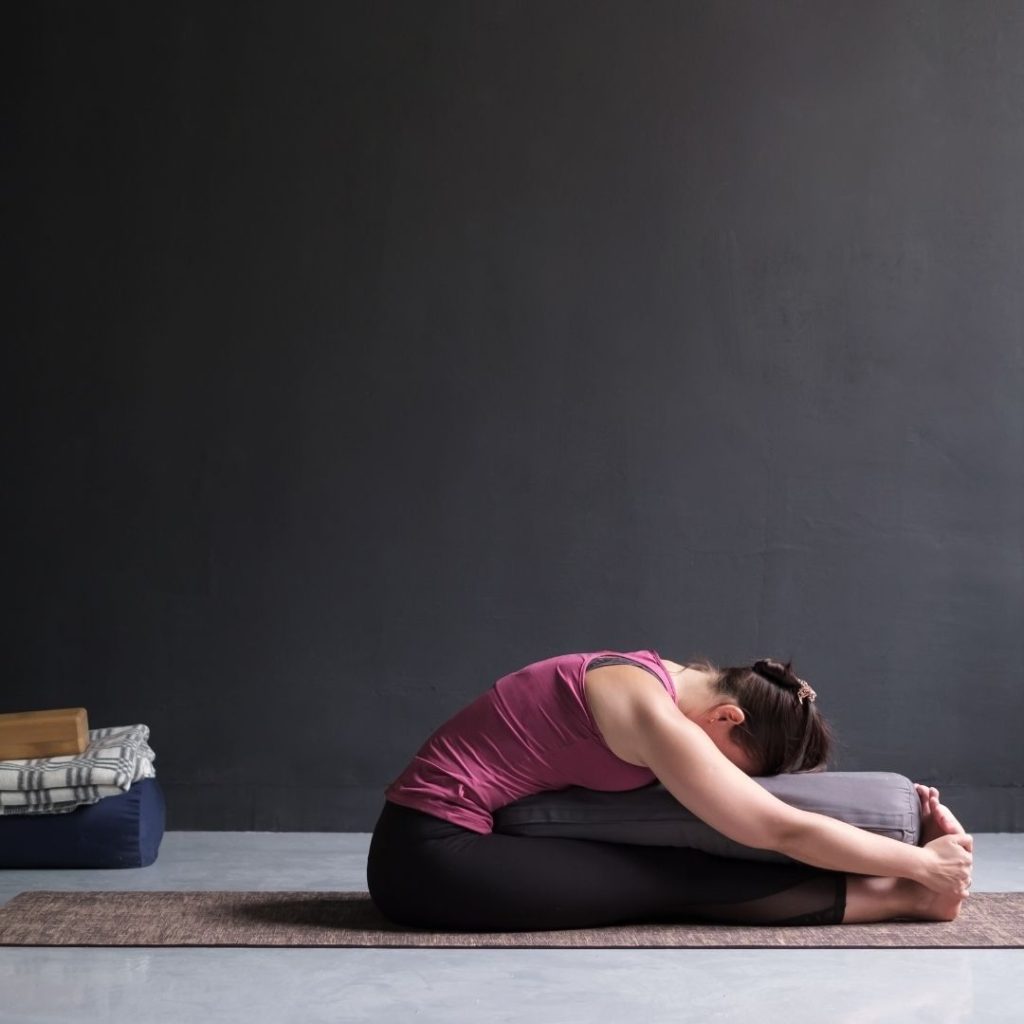
Feeling sore after Yin Yoga practice? 👉 Check this article where we explain why this may be the case and how to avoid it.
In summary
Yin Yoga is accessible to all levels and morphologies, using yoga props and postures.
You don’t have to be particularly flexible, sporty, slender or dynamic. You just need to have a certain curiosity and a desire to open yourself to a new experience.
Yin can be practiced at any time of the day. In the morning when waking up, the body is not yet warmed up, the muscles stretch less, which allows the fascias to lengthen better.
Yin Yoga brings back the lost range of motion, improves the quality of the Yin tissue, preserves against aging, maintains good mobility, reduces the curve of the spine, leads to a better absorption of hydration, and considerably avoids osteoporosis.
However, the practice of Yin should be accompanied by Yang practice (vinyasa or other) for a perfect balance.
Read also:
Did you find this post useful? Save THIS PIN below to your Pinterest Yoga board on Pinterest for later!


